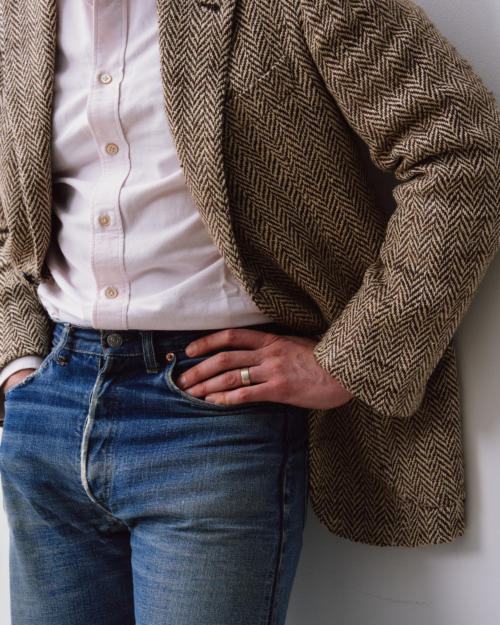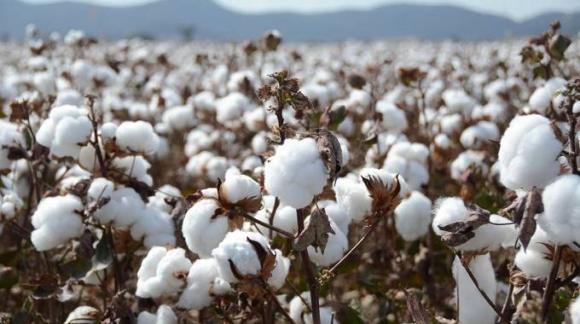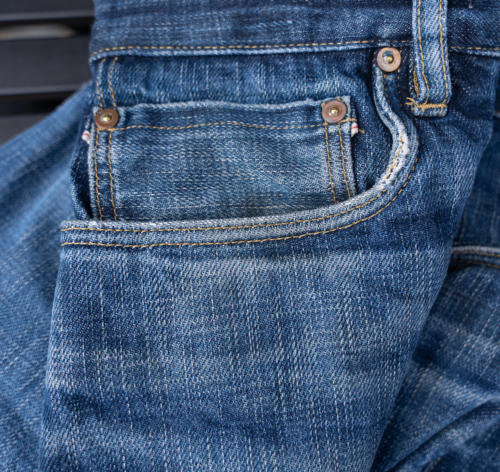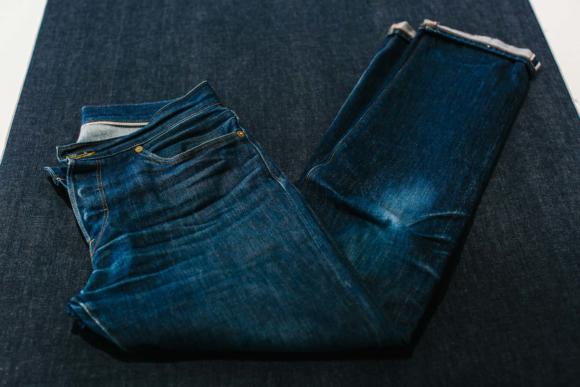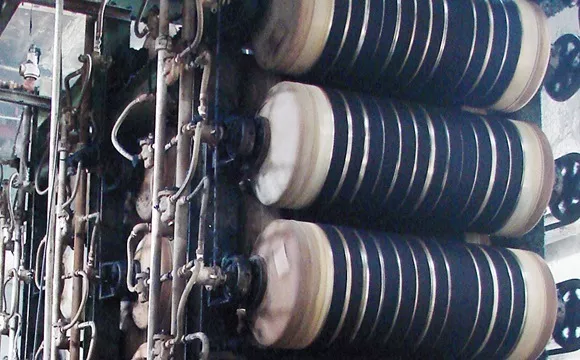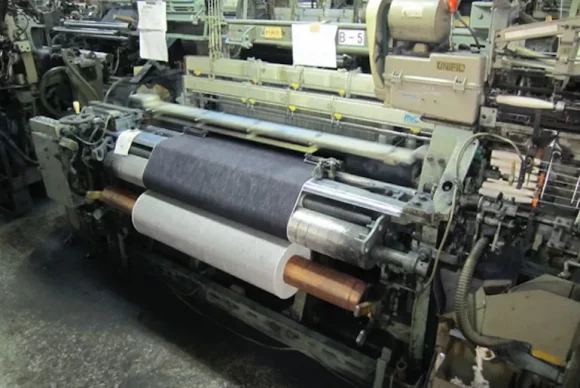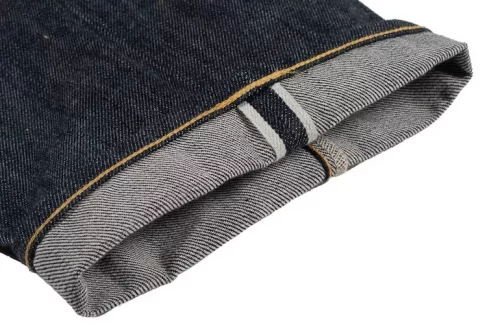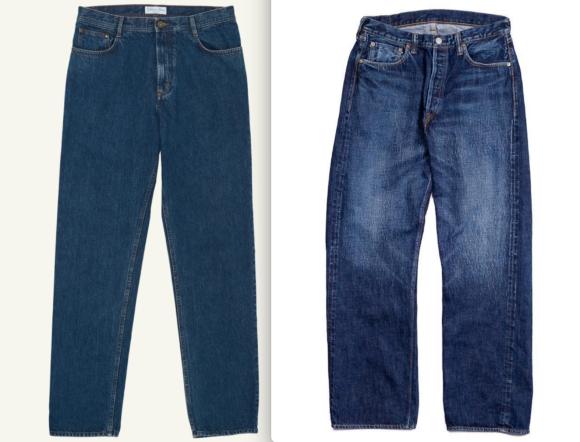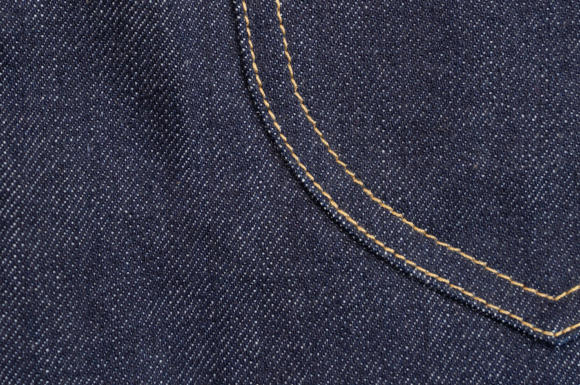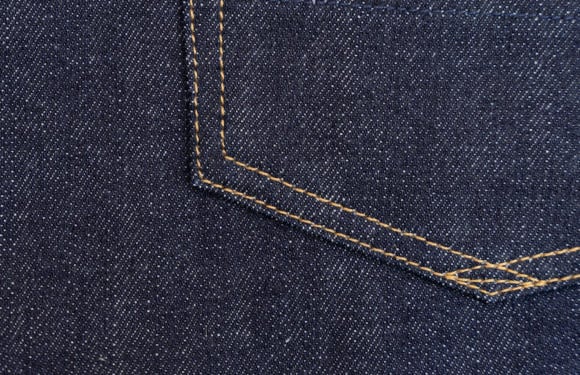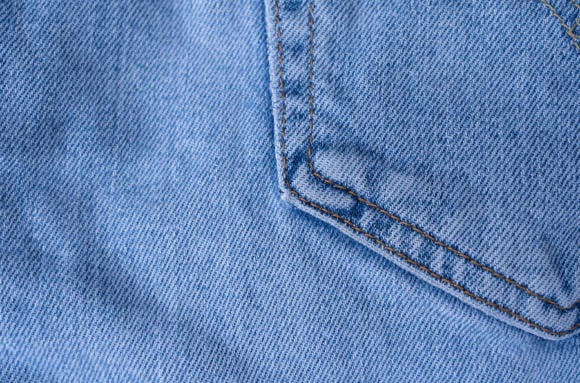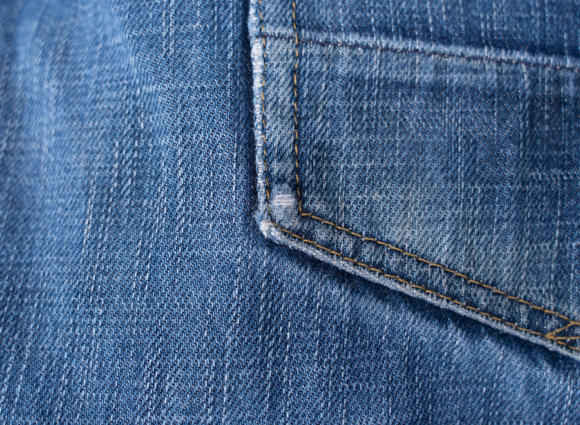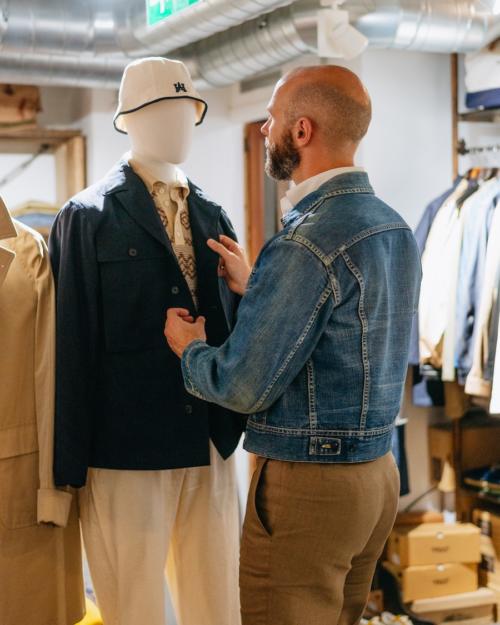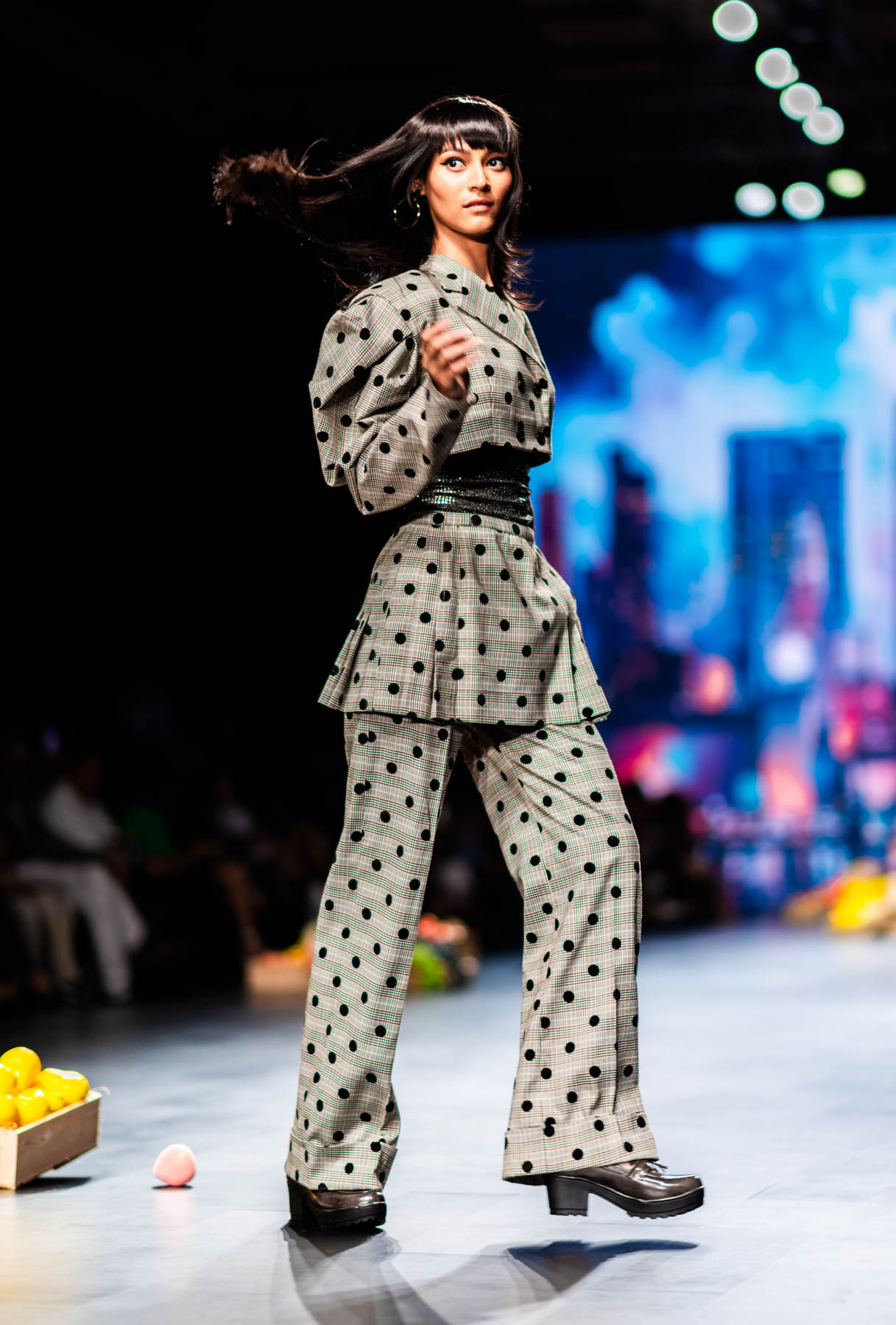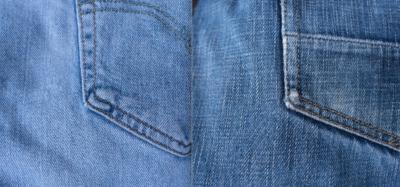
A reader commented recently (I paraphrase): “Why should I care about old jeans? They were all mass produced and basically the same.”
There are a couple of things wrong with that. The first is that mass production doesn’t necessarily mean lower quality. It often does, but anyone that’s seen Loro Piana weaving, or Hermes silk, will know scale can also produce the absolute best quality.
The second, more important point builds on the first. Jeans have not always been the same. Mass production of denim used to be much better, both because of better materials and better processes.
That’s a reason for buying, for example, vintage from the 1960s rather than 1970s. But that same quality of production can also be seen today, if you know what to look for.
Today’s article is intended to provide a breakdown of what factors make quality denim; the effect each factor has on your jeans; and finally, which ones I would personally prioritise.
When you read that a pair of jeans uses synthetic indigo and is ring spun, you’ll know what that means – and have an opinion on whether you should care.
Cotton
The cotton that goes into denim is arguably the most important factor of all. Rather like cooking, if you start with good ingredients the end result will be good, no matter how simply it’s made.
I can’t take credit for that metaphor. That goes to Illya of Blackhorse Lane Ateliers, who along with designer Leanne, helped me with the technical details on this piece as well as giving me their opinion on what they would prioritise.
“With cotton the important thing is to have a long staple, which normally comes standard when you source from a particular area, such as Zimbabwe cotton,” says Illya. And what effect does that have? “It means the denim is stronger, but also softens better over time as well – that’s why those old 60s Levi’s are so soft after so long.”
I can see that with my various old Levi’s. An old 1990s pair I have has been worn to death – and looks great in that way – but the cotton has become stiffer and coarser over time. The denim on my 1960s pair, by contrast, is incredibly soft.
Being long staple also creates greater character: you get more noticeable variation in the denim. “Cheap cotton is made up of shorter fibres, and looks more uniform as a result,” says Illya. This is something that will come up repeatedly in this article: premium denim has more natural character to it (eg above), where others are smoother and more uniform.
Which you prefer is a personal choice – they’re just different looks. I prefer the variety of fading and colours you get with more characterful denim, but that’s my preference. I’ll explain why, then you can make up your own mind.
Other aspects of the cotton don’t matter as much as the staple length. Fine cotton isn’t a priority, unlike with luxury suitings or shirtings, and while organic denim is nice, high-end cottons are usually produced in a more sustainable way anyway. You need to use fewer pesticides and take better care of the soil to produce that type of plant.
Spinning
There are broadly two options here, ring spun and open-end spun.
Ring spinning is the original method, invented in the US in 1828, and involves thinning the cotton using frames before twisting it. Open-end spinning has been used by most manufacturers since the 1970s, and is like the methods used for making materials for shirts or tailoring.
Ring spinning costs more and takes longer, but produces a softer, stronger yarn, and one with slightly more variation – similar to the distinction between long and short-staple cotton. Open-end spun denim also tends to have a cleaner finish.
“Italian mills like Candiani prefer open-spun denim, because they want uniformity and consistency,” says Illya. “The Japanese, on the other hand, have largely stayed faithful to the old methods and produce more irregular, perhaps more interesting denim.
“We use Candiani as well as something Japanese like Kaihara, because we want to offer customers both. You can spot Italian denim from a mile off – it’s so much smoother and more refined.”
Both Leanne and Illya said they preferred ring spun, but suggested someone who was into tailoring might prefer something smoother. I found this interesting, because despite being a tailoring nerd, it’s the natural, organic look I love. To my mind the difference is more similar to fine shoes, where menswear enthusiasts value the patina the leather acquires over time, rather than a uniform surface.
Dyeing
There are broadly two options here as well: rope dyeing (above) and slasher dyeing. (This is dyeing the yarn, we’re not getting into dyeing the cloth or the finished jeans – piece dyeing or garment dyeing.)
Rope dyeing is the original, slasher dyeing an invention of the 1970s. Interestingly, many of the inventions were made in Europe, because Europeans had seen worn-in blue jeans from America and wanted that, rather than the dark, raw denim they had started as. Hence Italy’s dominance in this area.
The difference between dyeing and spinning is that a lot of denim today is still rope dyed. That’s because rope dyeing leaves more of the denim white, creating that fading that everyone expects from jeans – or wants immediately from washed jeans. With slasher dyeing – in sheets rather than ropes – the yarn is exposed to the indigo for longer and absorbs more.
When it comes to the indigo used in the dyeing, nearly everything is synthetic. This might seem surprising, given the emphasis on natural processes everywhere else, but synthetic indigo has been used since 1897, and took over natural indigo as the most popular choice in 1913.
As a result, all the denim we’ve seen uses synthetic indigo, and that’s what we expect. Natural indigo has a rather green cast, fades more slowly, and doesn’t produce high-contrast fades.
Weaving
Another dichotomy here: shuttle looms or projectile looms.
Generally, denim woven on a shuttle loom (above) will be woven slower and as a result have less tension and more slubbiness. Both characteristics generally favoured by enthusiasts – and which line up with long-staple cotton, ring spinning and rope dyeing.
However, there is more variation among mills here, with some good denims being produced on projectile looms – just with better ingredients and other processes.
Also, the split between types of loom is a simplification, as you can get faster and slower projectile looms, and even ones that intentionally reproduce the ‘loom chatter’ that Cone Mills looms used to get from sitting on wooden boards rather than concrete floors.
The issue is further complicated by the issue of selvedge.
The selvedge (self-edge) is the strip that runs down both sides of a piece of denim, stopping it from fraying. It’s usually used on the outside seam of a pair of jeans, and so is visible if you turn up the hem (above).
Selvedge used to be a guarantee of quality because it indicated how the denim had been made. But some brands have been known to put fake selvedge on denim, or simply to weave it with a selvedge but use cheap raw materials, because the selvedge is what people care about.
“The thing is, selvedge only indicates one aspect of how denim has been made, and you need all of them to produce great jeans,” says Leanne.
Still, at an absolute minimum, selvedge does indicate that the manufacturer has gone to some kind of effort to give the impression of quality. “And if you add that to the fact it’s Japanese, you pretty much know it’s going to be quality without knowing everything else about the processes,” Leanne says.
Some of the factors that go into denim are mixed up: quality cotton, for example, that is slasher dyed and woven on a projectile loom. But usually, there is a clear difference in the intended look: natural, varied, fading or smooth, consistent and homogenous.
I’ve illustrated the difference above – an Italian denim from P Johnson on the left, a Japanese jean from Full Count on the right. I can see how some people might think the left is easier to wear, particularly with smarter clothing. But to me it looks like an imitation.
Below, I’ve shown some close-ups. First of raw denim, comparing open-end spun/slasher dyed to ring spun/rope dyed; then worn examples. The difference is there, but not that marked, on the raw denims. Once they’re worn and washed it’s pretty obvious.
I’ve already pointed out the parallel with shoes, but perhaps there’s one with flannel as well.
The reason I don’t like worsted flannel is that in order to make the material lighter, most of the things that make flannel attractive are removed – its softness, its fuzziness, its handle. I don’t want to sacrifice all of those in order to get a flannel I can wear in summer, because it isn’t actually flannel any more. It’s something different.
The same is true of denims that are trying to be smoother and less varied. You’re making a denim that is easier to produce and sell, but at the expense of some of things that made jeans attractive in the first place. At the very least, it’s a different type of material.
Many thanks to Illya, Leanne and the rest of the Blackhorse Lane team for their help with this article. You can read about how jeans are actually made, and Blackhorse Lane’s unique take on it, in a previous article here.
We also covered raw denim, washing it and sizing it, quite thoroughly in a previous article here.
If you want more detailed technical information, Heddels is one of the best resources on the web.
Credit for the close-up images goes to Illya at Blackhorse Lane.

